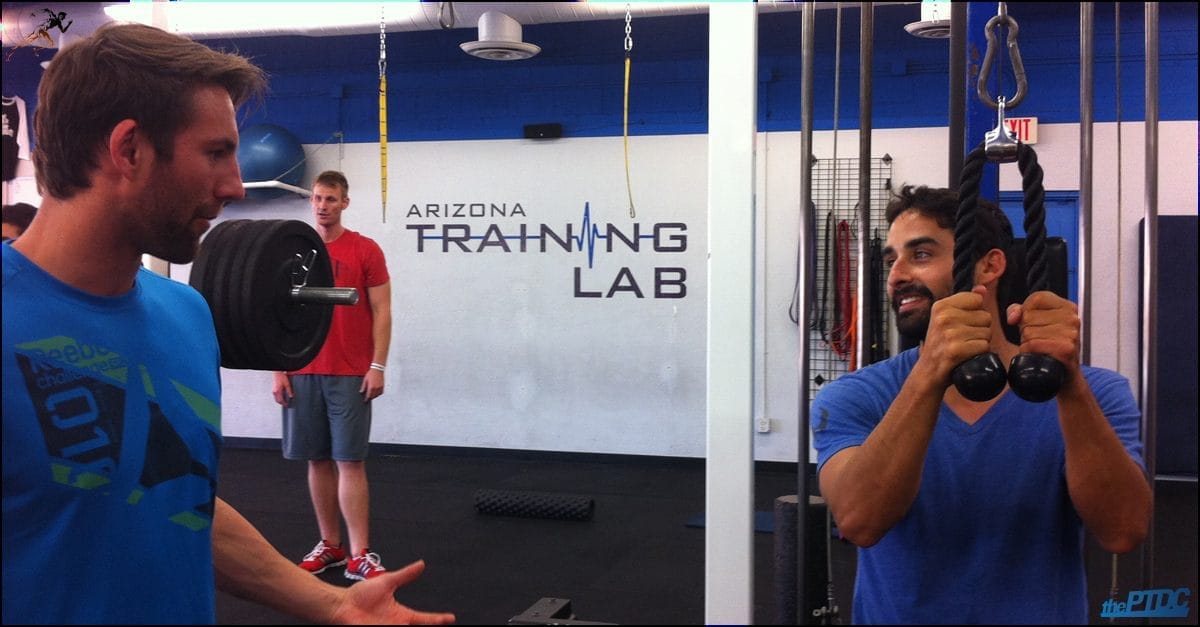Embarking on a fitness journey can be daunting for beginners, often leading to confusion and frustration. This article aims to provide essential guidance on setting realistic fitness goals, choosing the right workout routine, building a supportive community, and staying motivated through progress tracking. By addressing these key areas, you can create a structured and enjoyable path toward achieving your fitness aspirations.
Whether you’re looking to lose weight, build muscle, or simply enhance your overall well-being, understanding how to set achievable goals and maintain motivation is crucial. This guide will equip you with practical strategies to navigate your fitness journey effectively, ensuring you stay engaged and accountable along the way.
In this article you will find:
Setting Realistic Fitness Goals
Embarking on a fitness journey can be both exhilarating and overwhelming, especially for beginners. One of the most crucial steps in this journey is setting realistic fitness goals. Goals not only provide direction and motivation but also help track progress and maintain accountability. However, unrealistic goals can lead to disappointment and frustration, making it essential to approach this process thoughtfully.
Understanding the Importance of Realistic Goals
Realistic fitness goals are essential for several reasons:
- Enhances Motivation: Achievable goals foster a sense of accomplishment, encouraging you to continue your fitness journey.
- Reduces Injury Risk: Setting attainable goals helps prevent overexertion and injuries that can arise from pushing yourself too hard too soon.
- Builds Confidence: Achieving smaller, realistic goals can boost your confidence and reinforce your commitment to your fitness routine.
SMART Goals Framework
One effective way to set realistic fitness goals is by using the SMART framework. This acronym stands for:
- Specific: Your goal should be clear and specific. Instead of saying, “I want to get fit,” try “I want to run a 5K in three months.”
- Measurable: Include measurable criteria to track your progress. For example, “I will work out three times a week for 30 minutes.”
- Achievable: Ensure that your goal is attainable based on your current fitness level. Aiming to lose 10 pounds in a month may not be realistic for everyone.
- Relevant: Your goals should align with your personal interests and lifestyle. If you dislike running, consider cycling or swimming instead.
- Time-bound: Set a deadline for your goal. This creates urgency and helps you stay focused.
Breaking Down Larger Goals
While it’s great to have larger fitness ambitions, breaking them down into smaller, manageable milestones can make the process less daunting. For instance, if your ultimate goal is to lose 30 pounds, consider breaking it down into monthly targets of 2-3 pounds. Celebrate each small victory to maintain motivation.
Adjusting Goals as Needed
Flexibility is key in your fitness journey. As you progress, you may find that your initial goals need adjustment. Factors such as changes in your schedule, physical capabilities, or interests can all impact your fitness objectives. Regularly reassess your goals to ensure they remain relevant and achievable. This adaptability will help you stay committed and engaged in your fitness journey.
Seeking Professional Guidance
If you’re unsure how to set realistic fitness goals or how to achieve them, consider seeking advice from a fitness professional. Personal trainers can provide tailored guidance, helping you create a structured plan that aligns with your aspirations. Additionally, resources like the American College of Sports Medicine offer valuable information on fitness standards and goal-setting strategies.
By focusing on setting realistic fitness goals, you lay a strong foundation for your fitness journey. This thoughtful approach not only enhances your chances of success but also makes the process enjoyable and rewarding.
Choosing the Right Workout Routine
Finding the perfect workout routine is a vital step in your fitness journey. With countless options available, it can be challenging to determine which routine aligns best with your goals, lifestyle, and preferences. Choosing the right workout not only maximizes your results but also enhances your enjoyment and adherence to the program.
Assessing Your Fitness Goals
Before diving into various workout options, it’s essential to clearly define your fitness goals. Are you looking to lose weight, build muscle, increase endurance, or improve flexibility? Understanding your primary objectives will guide you in selecting the most effective routine. Here are some common fitness goals and suitable workout types:
- Weight Loss: Consider high-intensity interval training (HIIT) or circuit training, which can burn significant calories in a short amount of time.
- Muscle Building: Strength training with free weights or resistance bands is ideal for hypertrophy and muscle definition.
- Endurance Improvement: Activities like running, cycling, or swimming can enhance cardiovascular fitness and stamina.
- Flexibility and Balance: Incorporate yoga or Pilates to improve flexibility, core strength, and overall balance.
Evaluating Your Fitness Level
Your current fitness level plays a crucial role in determining the right workout routine. Beginners should start with foundational exercises to build strength and confidence. Consider the following:
- Start Slow: If you’re new to exercise, begin with low-impact workouts like walking, swimming, or beginner yoga classes.
- Gradual Progression: As your fitness level improves, gradually increase the intensity and duration of your workouts.
- Listen to Your Body: Pay attention to how your body responds to different exercises. If something feels too challenging or causes pain, modify the routine accordingly.
Exploring Different Workout Formats
Today’s fitness landscape offers a variety of workout formats, each with its unique benefits. Here are some popular options to consider:
- Group Classes: Joining a class can provide motivation and accountability. Look for options like Zumba, spin classes, or boot camps.
- Personal Training: Working with a personal trainer can offer personalized guidance and support, ensuring you perform exercises correctly and safely.
- At-Home Workouts: If convenience is a priority, consider online workout programs or fitness apps that allow you to exercise at home.
- Outdoor Activities: Embrace nature by engaging in hiking, biking, or outdoor yoga, which can add variety and enjoyment to your routine.
Creating a Balanced Routine
A well-rounded workout routine includes a mix of different exercise types to promote overall fitness. Consider incorporating:
- Cardiovascular Training: Aim for at least 150 minutes of moderate-intensity cardio each week.
- Strength Training: Include strength exercises for all major muscle groups at least twice a week.
- Flexibility Work: Dedicate time to stretching or flexibility exercises to enhance mobility and prevent injuries.
Staying Flexible and Open to Change
As you progress in your fitness journey, your preferences and goals may evolve. Stay open to trying new workouts and formats to keep your routine fresh and exciting. Regularly reassess your routine and make adjustments based on your changing interests and fitness levels. This adaptability will not only help you stay engaged but also ensure continual progress.
For further insights into workout routines tailored for beginners, check out resources like ACE Fitness, which provides expert advice on creating effective workout plans.
Building a Supportive Community
Creating a supportive community is a vital aspect of any fitness journey, especially for beginners. The encouragement and camaraderie from a group can significantly enhance motivation, accountability, and overall enjoyment of the process. Here’s how to build and nurture a supportive fitness community that aligns with your goals.
The Benefits of a Supportive Community
A strong support network can offer numerous advantages during your fitness journey:
- Increased Motivation: Being part of a community can inspire you to push through tough workouts and stay committed to your goals.
- Shared Experiences: Connecting with others who share similar challenges helps reduce feelings of isolation and provides a sense of belonging.
- Accountability: Regular check-ins with community members can help you stay on track and maintain consistency in your workouts.
- Access to Resources: Communities often share valuable resources, tips, and advice that can enhance your fitness knowledge.
Finding Your Community
There are various ways to find a supportive fitness community that resonates with you:
- Local Gyms and Studios: Many gyms offer group classes or clubs that foster a sense of community. Look for classes that align with your interests.
- Online Platforms: Social media groups, forums, and fitness apps can connect you with like-minded individuals. Consider joining platforms like Strava or MyFitnessPal to engage with others.
- Community Events: Participate in local fitness events, such as fun runs, charity walks, or fitness challenges, to meet others in your area.
Engaging with Your Community
Once you find a community, actively engaging with its members is key to building supportive relationships:
- Attend Regularly: Consistency is essential. Attend classes or meet-ups regularly to build rapport with fellow members.
- Share Your Journey: Openly sharing your successes, struggles, and milestones can foster deeper connections and inspire others.
- Encourage Others: Offer support and encouragement to fellow members. A simple word of encouragement can go a long way in boosting someone’s morale.
Creating Your Own Community
If you’re unable to find a community that suits your needs, consider creating one. Here’s how:
- Start a Group: Use social media platforms to form a group focused on specific fitness goals or activities, such as running or weightlifting.
- Organize Meet-Ups: Plan regular workout sessions or social gatherings to strengthen bonds and foster a sense of community.
- Leverage Technology: Utilize apps like Zoom for virtual workout sessions, allowing members to connect regardless of location.
Utilizing Social Media for Support
Social media can be a powerful tool for building and maintaining a supportive fitness community. Here are some strategies:
- Follow Inspiring Influencers: Engage with fitness influencers who share motivational content and practical tips.
- Join Fitness Challenges: Participate in online challenges that encourage community interaction and collective goal achievement.
- Share Your Progress: Post about your fitness journey on social media to inspire others and invite support from your followers.
For more insights on building a fitness community, consider visiting Verywell Fit, which discusses the importance of community in achieving fitness goals.

Staying Motivated Through Progress Tracking
Maintaining motivation throughout your fitness journey can be challenging, especially for beginners. One effective strategy to keep your enthusiasm high is through progress tracking. By monitoring your achievements and milestones, you can gain valuable insights into your fitness journey, celebrate successes, and identify areas for improvement. Here’s how to effectively track your progress and stay motivated.
The Importance of Progress Tracking
Progress tracking serves several essential functions in your fitness routine:
- Visual Representation of Success: Seeing your progress in numbers or visuals can provide tangible proof of your hard work, reinforcing your commitment to your goals.
- Enhanced Accountability: Regularly tracking your workouts and results encourages you to stay accountable to your fitness routine.
- Informed Adjustments: Tracking allows you to recognize patterns in your performance, helping you make informed decisions about necessary adjustments to your routine.
Methods for Tracking Progress
There are various methods to track your fitness progress, each catering to different preferences and goals:
- Fitness Apps: Utilize apps like MyFitnessPal or Fitbit that allow you to log workouts, track nutrition, and monitor progress over time.
- Wearable Devices: Fitness trackers can provide real-time data on your activity levels, heart rate, and sleep patterns, giving you a comprehensive view of your health.
- Workout Journals: Keeping a physical journal can be a powerful way to reflect on your workouts, jot down thoughts, and note improvements.
- Progress Photos: Taking regular photos can visually capture changes in your physique and boost motivation when you see tangible results.
Setting Milestones and Celebrating Achievements
To maintain motivation, set specific milestones along your fitness journey. These can be short-term (weekly or monthly) or long-term (quarterly or yearly) goals. Celebrate these achievements, no matter how small, to reinforce positive behavior. Here are some examples:
- Weekly Goals: Aim to increase your workout duration or intensity each week.
- Monthly Challenges: Participate in challenges, such as completing a certain number of workouts or achieving a personal best in a specific exercise.
- Reward System: Treat yourself to a small reward for achieving milestones, such as new workout gear or a massage.
Reflecting on Your Progress
Regular reflection on your progress is crucial. Set aside time each week or month to review your achievements and challenges. Consider the following:
- What Worked Well: Identify strategies or workouts that yielded positive results.
- Areas for Improvement: Acknowledge any obstacles you encountered and brainstorm solutions for overcoming them.
- Adjust Goals if Necessary: If you find that certain goals are too easy or too difficult, don’t hesitate to adjust them to better fit your current capabilities.
Seeking Support and Accountability
Sharing your progress with a supportive community can enhance motivation. Consider:
- Workout Buddies: Partnering with a friend or family member can create a sense of accountability and make workouts more enjoyable.
- Online Communities: Engage with online fitness groups or forums where members share their progress and offer support.
- Social Media: Document your journey on social media platforms to inspire others and receive encouragement from your followers.
For additional insights on effective progress tracking methods, visit Healthline, which discusses various strategies for tracking fitness progress effectively. Setting realistic fitness goals is crucial for beginners, as it enhances motivation, reduces injury risk, and builds confidence. Utilizing the SMART framework—Specific, Measurable, Achievable, Relevant, and Time-bound—can help in creating clear objectives. Breaking larger goals into smaller milestones and remaining flexible to adjust them as needed will further support your journey. Seeking guidance from fitness professionals can also provide tailored advice to align your goals with your aspirations.
Choosing the right workout routine involves assessing your fitness goals, evaluating your current fitness level, and exploring various workout formats such as group classes or at-home workouts. A balanced routine should incorporate cardiovascular training, strength exercises, and flexibility work. Engaging with a supportive community, whether through local gyms or online platforms, can enhance motivation and accountability, making your fitness journey more enjoyable and effective.




